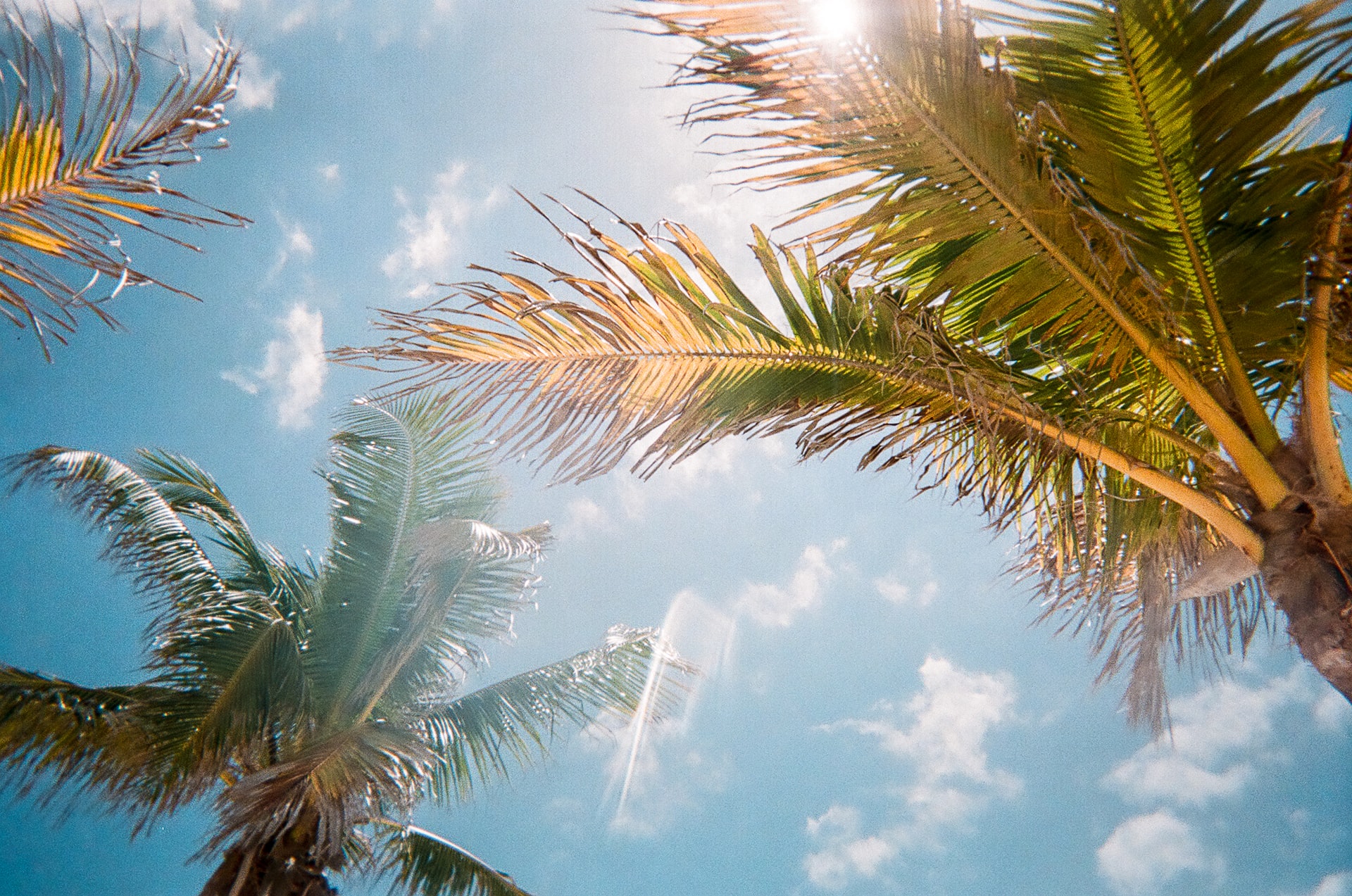
Nature has such a sense of humor! In my last post, I said (confidently) not to bother with a vegetable garden in June in any part of Florida. It’s too hot, too humid… too buggy! So, I had no idea what I could advise to plant in June in Florida, since I’ve found it to be a futile endeavor.
So, what else should happen than to be blessed with a surprise crop of oncoming cucumbers — a vegetable, I must add, that I have rarely grown successfully.
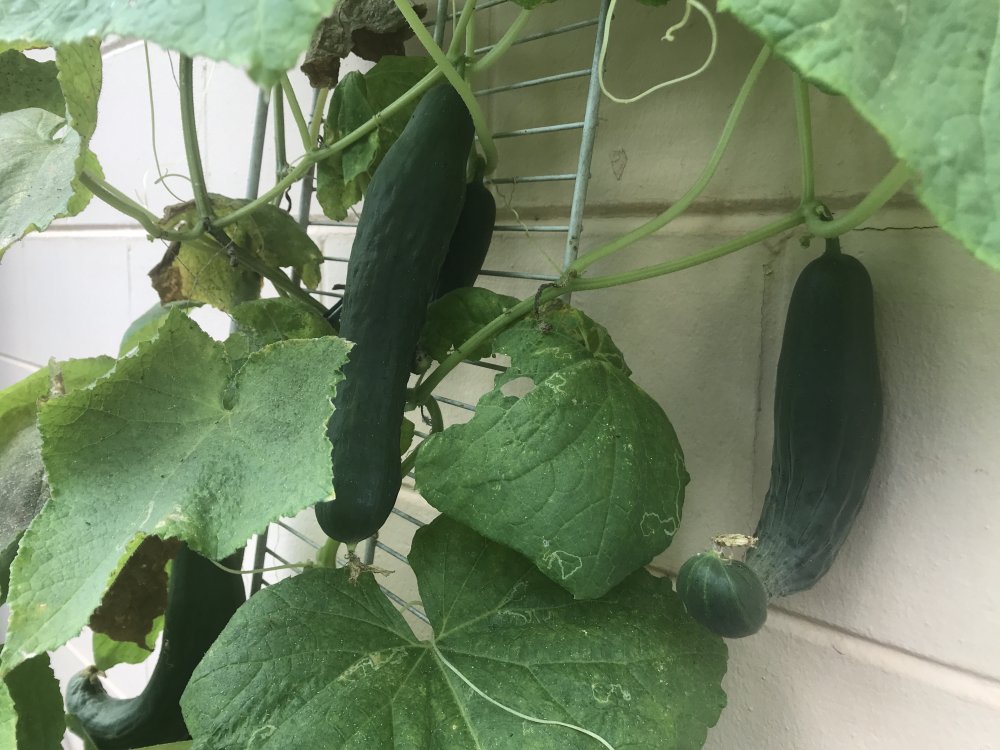
This variety is a complete beast! They’re called Sweet Success, and as long as you can trellis them, they will certainly perform.
With that admission, it’s also important to note that I didn’t plant them in June. I planted this in late March and this is their second cropping after suffering a dry spell.
You may have quite a few fruits and vegetables to harvest in June if you’ve taken care of your garden or simply been lucky. But there are still very few things to plant out.
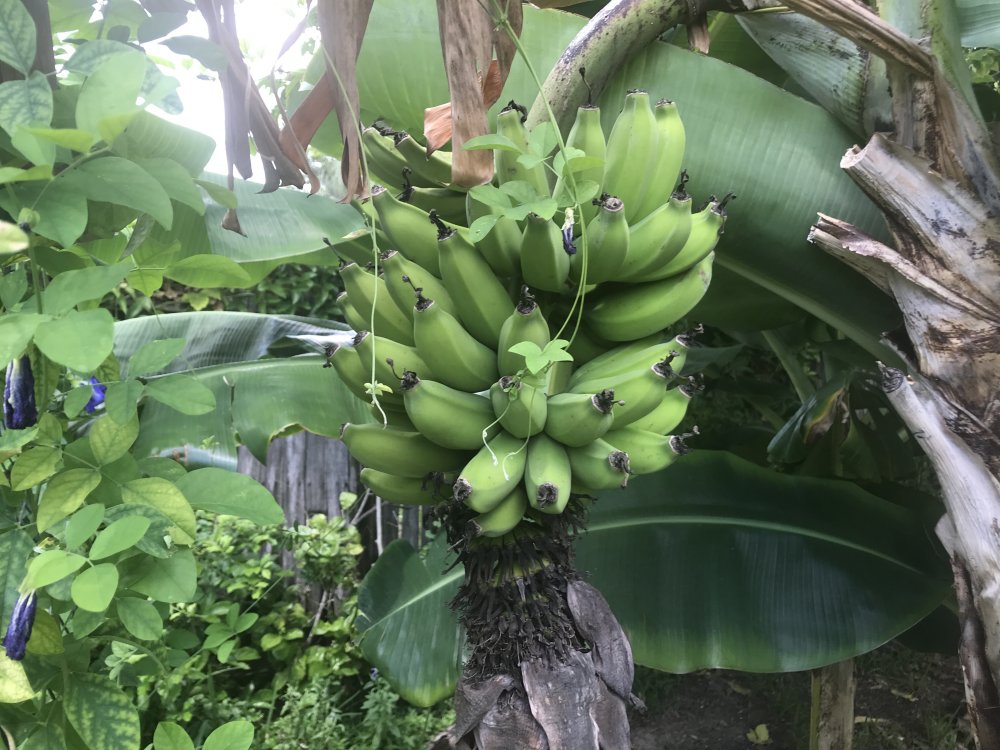
It may be that you’re finally reaping the rewards of planting three months ago — or even three years. Our bananas are getting fat, and our Barbados cherry tree is dripping with fruit.
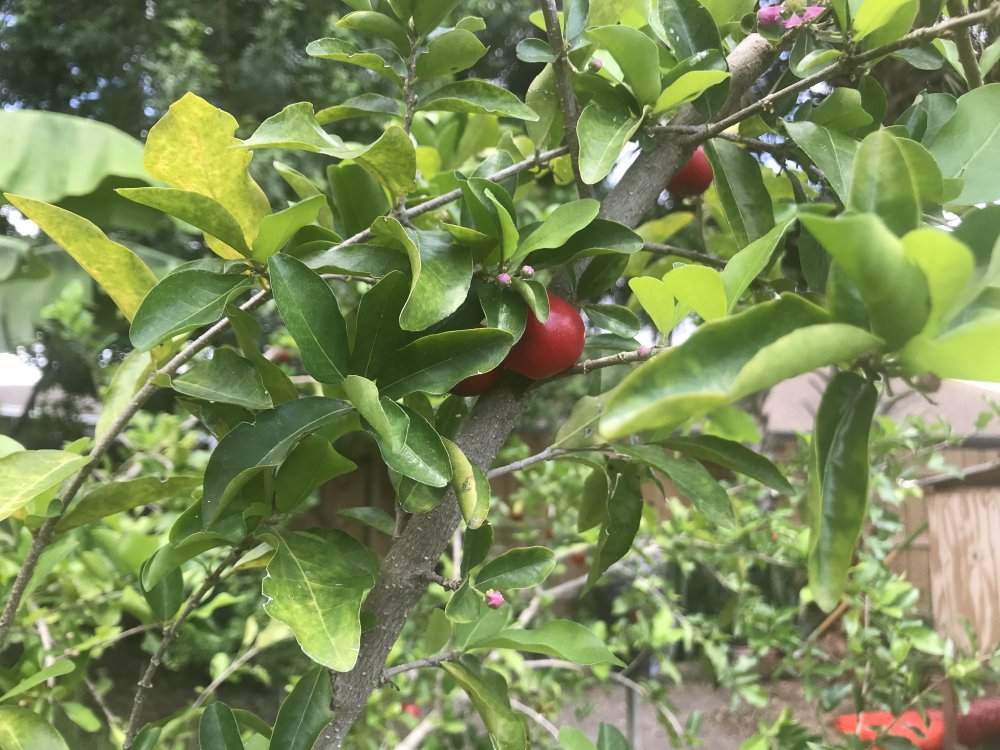
But if you don’t have a harvest, is there anything you can plant in June in Florida?
Some Unfamiliar Names
In almost all zones in Florida, you can plant a few exotic varieties of fruits and vegetables, even in the high heat of summer. Look for Southeast Asian and Central American edible plants to expand the variety you grow and eat.
I’ve tried quite a few of them, and if I’m completely honest, there are many I don’t like. There are also quite a few that I don’t like enough to fuss over during days when the heat index is 105°F and the humidity is 98%.
Fruits and Vegetables to Plant in June in Florida
One of the reasons I don’t think about planting some of the unfamiliar vegetables I do like in the summer is because I often plant them in late spring. However, there are a few you can start in June, and even July.
And the advantage is that our summer rainy season should help get them started. So, you won’t have to stand outside in our dry April, coaxing them to life with a garden hose.
Yard Long Beans
These are one of my favorites to grow in the summer heat. They start out a bit slow, which is why I plant them in April. However, you can pretty much plant them any time of year in Central or South Florida.

buy seeds on amazon.com
Note that you WILL need a trellis and you will need one a lot taller than you could possibly imagine. You’ll be rewarded with a constant flow of delicious meaty-textured beans until December for your trouble.
Sweet Potatoes
This is another one that I generally plant long before June, so I never think of it as a “summer vegetable.” Especially considering that it takes four to five months to harvest. I usually grow my own slips from store-bought organic varieties. It takes about two to three months to get healthy slips.
I usually plant to get slips started in late winter so I can start planting in March. This way, I can plant out the slips in succession, which gives me a harvest of sweet potatoes starting in July thorugh December.
However, if you can get your hands on some slips, you still have time to plant them out for harvest in November or December. The summer heat won’t faze them if you get regular rainfall.
Calabaza Squash

buy seeds on amazon.com
This Caribbean veggie is remiscient of pumpkin, but can take the heat. This is the first summer I’m growing it, so the jury is still out. I planted mine out in May, but my sources tell me you can still plant it in June. It looks delicious, and I sure hope mine proves to be.
Alternatives to Plant in June in Florida
June might also be a great time to plant something other than edibles. Add some important companion plants to your garden, or draw in pollinators and other beneficial insects with herbs and flowers.
Marigolds
Tagetes patula, or French marigolds (which are actually Mexican marigolds) work in several ways to improve your garden. They’re not just cheerful and easy to grow.
Marigolds have been known to help deter root knot nematodes — something most Florida gardeners battle regularly. Planting a swath of French marigolds in your future fall tomato bed is a smart idea for summer.
They also attract bees, which is usually a good enough reason for me.
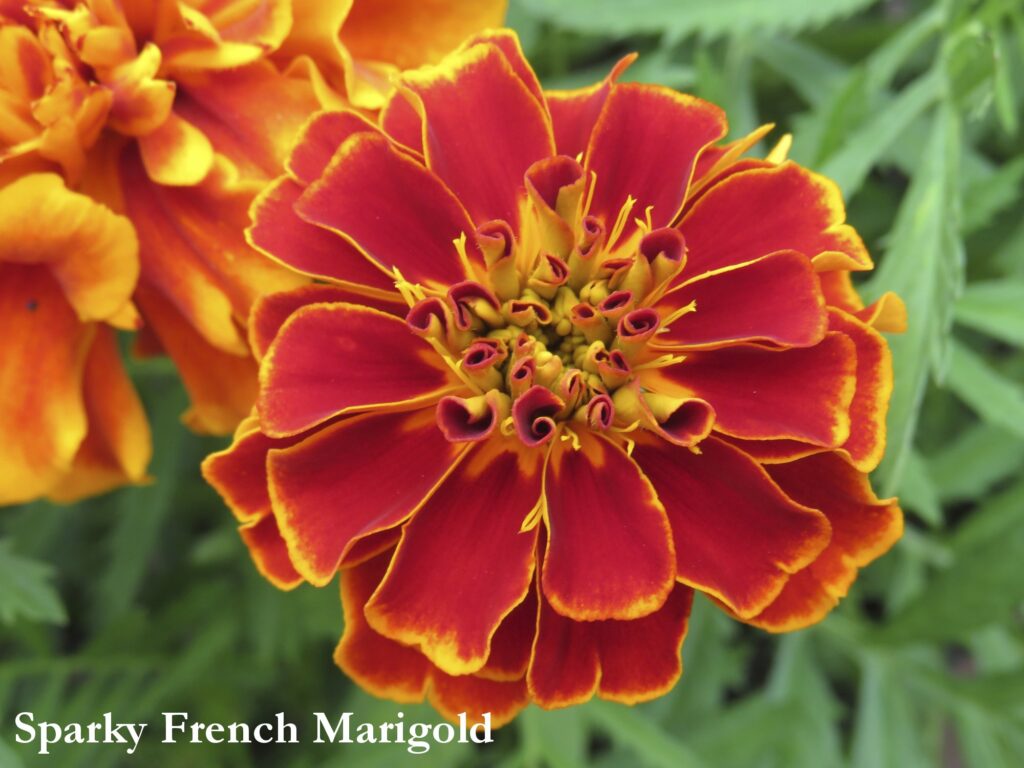
Tropical Milkweed
The skies over the gardens of Florida are filled with happy, frisky Monarch butterflies, looking to make more happy, frisky Monarch butterflies. What they’re looking for are milkweed plants, the singular host of their caterpillar.
There’s a lot of controversy about the use of Tropical Milkweed, since it isn’t native to the U.S., but is to Mexico and Central America. One of the key issues is that it tends to increase the chance of them getting a parasite called “OE” (Ophryocystis elektroscirrha).
This parasite is not a good thing and can result in deformed wings in adult butterflies that is nothing less the fatal. Tropical milkweed, because it doesn’t die back here in Florida, can increase the chance of them contracting this condition.
The problem is compounded by the fact that much of Central Florida and all of South Florida enjoys a year-round population of Monarchs that do not migrate to Mexico with their fellow butterflies. It’s warm enough for them to winter over here.
The advantage to Tropical Milkweed (Asclepias Curassavica) is that it germinates well and grows quickly in our subtropical climate. This means you’ll have plenty of monarch food in time for hungry catepillars. Other milkweed species — even Florida native milkweed — can be difficult to germinate and grow too slow for the current year’s brood.
The solution is very simple — cut back your Tropical milkweed to about 2 inches tall in October or November. This will cause the die-off of the parasites and reduce the infection. Also, make sure you have other nectar flowers on hand for them over winter.
But Tropical Milkweed is certainly a beneficial flower to plant in June in Florida and will bring color to your garden.
The Florida Garden Summer Lull
The gardening bug can often turn into an obsession. If you’re relatively new to gardening, you may feel compelled to keep planting through the summer. The COVID-19 lockdowns and subsequent panic over food supplies has meant a lot of new backyard growers in Florida, the U.S., and world-wide.
If you’re a long-time gardener but new to the state, you may find it weird that hardly anyone is planting corn and tomatoes and taking advantage of all this sunshine. That’s because we’ve learned to avoid heat exhaustion and sun stroke.
You may feel like you’re missing an opportunity if you don’t find something you can plant in June in Florida. There are a few things to keep you busy, but preparing for the main even in fall may be more productive.
See all the grass you’re cutting? Compost it! Rest the soil under some cooling mulch. Sharpen your tools, order your vegetable seeds, order your flower seeds, and plan your next season. If it helps, you can even start sowing starter tomatoes next month.
The main event starts in September.



